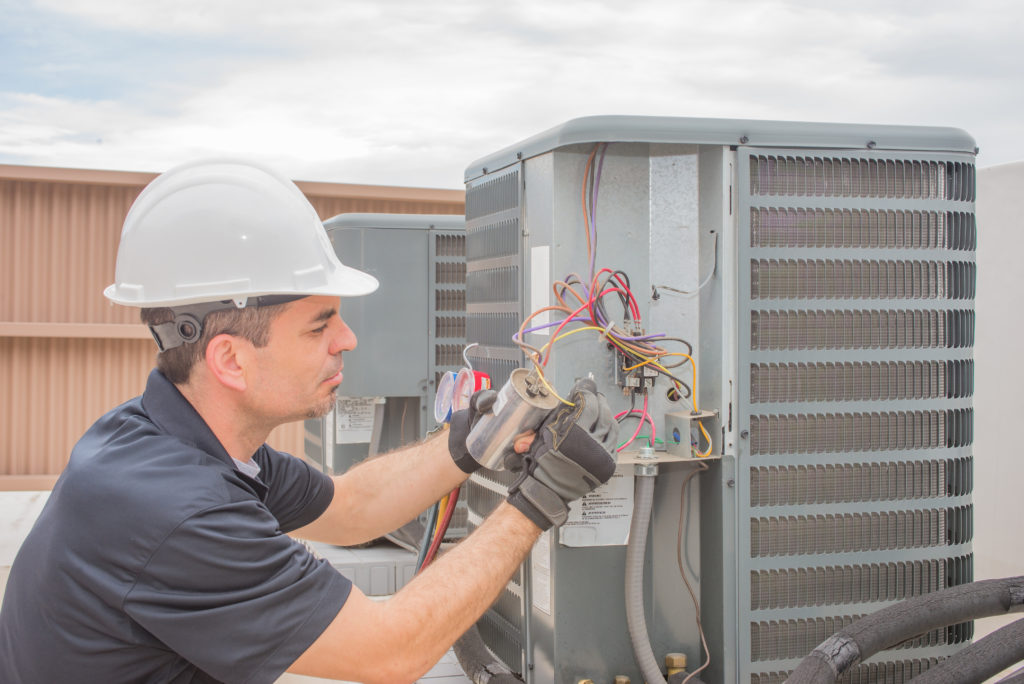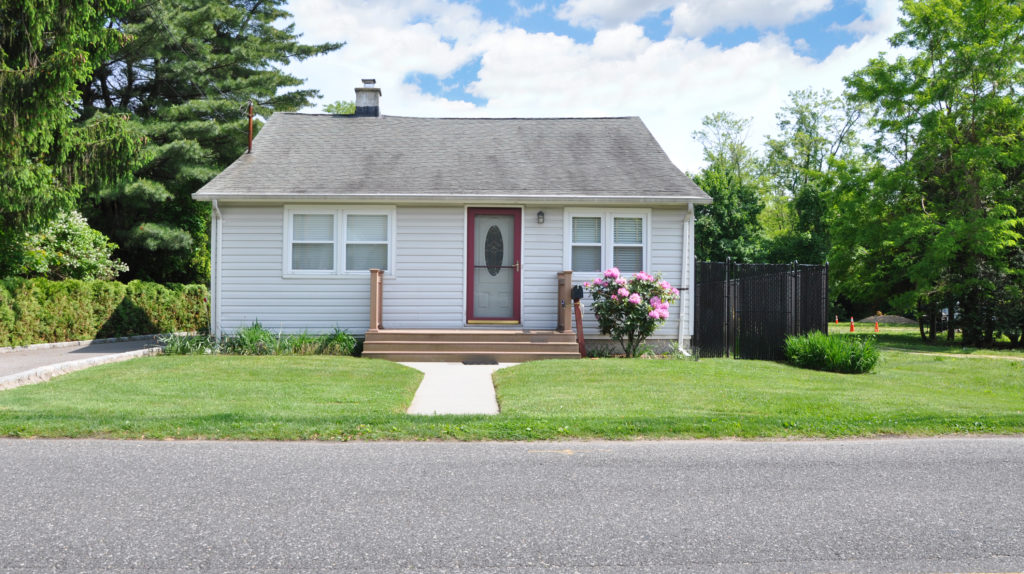Choosing the best central air conditioner brand is a big decision. It’s a major investment that can add years of comfort — and increase your home’s value.
There are many options available, so how do you choose a reliable AC system that will bring you the best value? This guide of the best central air conditioner brands of 2019 will break down what to consider when comparing central air conditioner systems to make the right choice.
What makes a top-rated central air conditioner brand?
There are several things to look at when deciding on a system. Don’t focus on initial price — a cheaper unit now may cost you more in repairs or utility bills in the long run. When evaluating the best central air conditioner brands 2019, consider these important factors.
Home size
Manufacturers build central air conditioning units according to the size of the spaces they will cool. The term “size” is not about a unit’s dimensions but its ability to produce cooled air. There’s an art to choosing the right-sized unit so that you don’t buy one that’s bigger (and more expensive) than you need or is too small and has to work harder to cool your home. Your installation expert will help you decide which size is best for you.
Energy efficiency
A unit’s energy-efficiency rating will predict how much it will cost to operate your AC. The higher the rating, the more efficient your system and the more you’ll save on your utility bill. Some common terms you should know are:
- EER and SEER Look for the rectangular yellow Energy Guide sticker or tag. EER (Energy Efficiency Ratio) shows how much electricity the system needs to run at 95°F outside and maintain 80°F with 50% humidity inside. SEER shows a unit’s efficiency as the temperature in your area changes each season. The more efficient the air conditioning system, the higher the number, with a minimum rating of 13.
- ENERGY STAR certification ENERGY STAR is a voluntary program and the “trusted, government-backed symbol for energy efficiency” designed to help consumers know how much their unit will cost to run.
- HSPF – Heating Seasonal Performance Factor measures the efficiency of a system’s heat pump. It measures a unit’s heat output, or energy consumption, over a typical heating season. Again, a higher number means greater efficiency.
Cost
Central AC systems vary in cost according to your home’s square footage, installation price, special features and energy efficiency. The more bells and whistles, the more expensive the system may be. In many cases, it’s worth the investment. Real estate website Zillow finds that homes with central air conditioning sell for an average of 2.5 percent ($5,486) more than homes without.
Warranty
A good warranty will save you thousands in repairs over the life of the unit. Different parts may have longer or shorter coverage, so read the fine print. Look for a warranty with a term of at least 10 years or longer. A warranty that can transfer to the next homeowner is an attractive selling feature.
Advanced features
Advanced features can add to your home’s comfort level and your personal convenience. Some features worth considering include:
- Smart programmable thermostat(s).
- A system with zones that can be individually controlled to adjust the temperature in different rooms.
- HEPA filters to keep allergy-producing particles away.
- A dehumidifier to keep moisture (and mold) under control.
- Quality insulation for quieter operation.
Customer reviews
Websites like Consumer Reports and the Better Business Bureau provide customer reviews of different brands. These are good resources to see how a central AC manufacturer handles customer complaints and issues.
Installation
Installation is a very important element to consider. An improper install could void the manufacturer’s warranty or damage the unit. Look for an installer that’s certified by the company and offers a warranty on installation.

The best central air conditioner brands 2019
Here’s an overview of the best central air conditioner brands of 2019 and why they make the list. (All details courtesy of the manufacturer.)
Trane
Trane systems are the top-of-the-line. They build their own compressors and Spine Fin coils for the ultimate in efficiency and reliability. Their HVAC units have a distinctive, sleek design.
Types of central air conditioners 9 models from single-stage to variable capacity. A compact model will fit in smaller homes.
Energy ratings 14.5 to 22 SEER.
Sound ratings An average of 70 decibels.
Advanced features The TruComfort feature reduces humidity by running longer at lower speeds instead of shutting off to remove moisture from the air.
Pricing/cost level ($ – $$$$) $$$
Warranties Standard 10-year warranty that covers both parts and labor and a 12-year compressor warranty.
Customer satisfaction Trane is rated as the second most reliable brand in the Consumer Reports survey.
Pros and cons There are not many cons when you choose Trane. If you don’t live in a hot area, a Trane unit may not be worth the price and efficiency rating.
Amana
Michigan-based Amana has been manufacturing systems since 1934. Amana central AC systems are affordable and the company emphasizes quality and reliability. Their products are made in the USA.
Types of central air conditioners Eight types including single to variable-speed models.
Energy ratings 14 to 24.5 SEER range.
Sound ratings 59dB to 71dB.
Advanced features ComfortBridge smart home technology gathers the system’s performance data to automatically make adjustments and minimize energy use in a home.
Pricing/cost level ($ – $$$$) $$
Warranties One of the best HVAC warranties of all brands. Besides the standard 10 year warranty, compressors come with a Limited Lifetime Replacement warranty.
Customer satisfaction Most complaints on Consumer Affairs are about the warranty not being transferable or not covering the installation of covered replacement parts.
Pros and cons Ideal for hotter climates due to their higher SEER rating. The unit’s installation costs could be higher than other brands, offsetting the lower price point of the unit.
Carrier
Carrier was founded in 1912 in Florida. They claim they invented the first “modern air conditioner” in 1902. As one of the oldest manufacturers of top rated heating and air conditioning systems, they are known to be reliable and have a good reputation for top-of-the-line central air conditioning and HVAC systems.
Type of central air conditioners Regardless of single-stage and two-stage models in the range, all our built with quality Copeland compressors so you can cool your home more precisely.
Energy ratings Up to a 21 SEER rating.
Sound ratings 49dB to 72dB.
Advanced features Carrier makes the quietest central air conditioners on the market thanks to their quality insulation and chassis.
Pricing/cost level ($ – $$$$) $$$$
Warranties 10-year parts warranty.
Customer satisfaction Considering Carrier has been in business for over 100 years, the company doesn’t have many complaints at the Better Business Bureau. Most were resolved.
Pros and cons Carrier may be pricier but they require installers to be certified by the company, guaranteeing proper installation of your investment.
Lennox
Lennox, headquartered in Texas, was founded in 1895. They offer many high-efficiency AC units in every price range, including one with an impressive 26 SEER rating, twice the minimum requirement.
Types of central air conditioners 11 models featuring two-stage or variable speed compressors for cooling your home more precisely.
Energy ratings 9 out of 11 of the units are ENERGY STAR qualified. Their highest rating is 26 SEER, the highest on the market.
Sound ratings 41dB to 76dB.
Advanced features The XC25 model has a 26 SEER for the lowest running cost of all units and an impressively low 41 dB noise level.
Pricing/cost level ($ – $$$$) $$$$
Warranties The unit and parts are covered by Lennox for five years from installation. Select models have a 10-year warranty.
Customer satisfaction Lennox is among the more reliable central air systems in Consumer Reports’ owner survey, with around 17 percent of owners reporting that their unit required service in its first five years.
Pros and cons Except for the XC25, other units are more expensive than similar competitor offerings. Considering the high price point, the warranty is disappointing.
Rheem
Rheem is best known for high-end water heaters. They expanded into HVAC systems in 1970 and are known for efficient and affordable AC units.
Types of central air conditioners Three series of multi-stage and variable speed central AC units are their standard offerings. Other companies consider those features as premium add-ons.
Energy ratings Up to 23 SEER.
Sound ratings 55dB to 72dB.
Advanced features EcoNet-enabled systems can be programmed and voice-controlled using Amazon Alexa.
Pricing/cost level ($ – $$$$) $$
Warranties 10 years limited warranty on parts and compressors if you register your product within 90 days of purchasing.
Customer satisfaction The most common customer complaint is about unhelpful customer service and problems which may be due to improper installation.
Pros and cons Rheem sells solid units at a middle price range. But the company doesn’t require certified installers, which may create issues if the unit isn’t installed properly.
Frequently asked questions
The best central air conditioner brands 2019 (based on many factors) include Amana, Carrier, Lennox, Rheem and Trane.
If you’re looking for the top rated heating and air conditioning systems, Lennox’s XC25 model tops the list in energy efficiency with a SEER rating of 26 — the highest rating on the market and double the minimum rating required of 13. Carrier offers the quietest range of central air conditioners on the market with a sound rating as low as 49 dB.
When choosing an AC system for your home, there are seven factors we cover in this guide you should consider: cost, customer reviews, energy efficiency, features, home size, installation and warranty.
